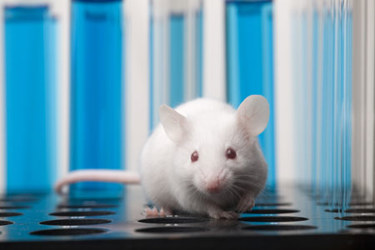New Regulatory Considerations For Animal Testing And The Consequences For Drug Product Formulation Development
By Michelle Gischewski, KM Consulting-Pharma Intelligence LLC

The U.S. is experiencing a shift in the regulatory environment for animal testing, driven by the evolving use of artificial intelligence (AI). This shift has a direct impact on how experts approach the formulation development for new drugs in the non-clinical phase. This article gives a high-level overview of how the design of drug product dosage forms is influenced by the animal selection in the non-clinical phase and how AI is contributing to changing this paradigm.
Phase-Appropriate Formulation Development
The development of a drug product formulation for a new chemical entity requires the use of phase-appropriate approaches. During the non-clinical phase, the animal models are an important driver for selecting the most appropriate dosage form and formulation to be used for in vivo administration. As explained in my previous article, the drug product formulation used for animal studies will not always be the same as the one used during human clinical trials, especially because during the non-clinical phase, the formulation strategies need to be adjusted to fit the animal model selected for the non-clinical trials. The selection of animal models is based on an understanding of the disease mechanism as well as on the recommendations from regulatory guidelines. ICH guideline M3 (R2) recommends the use of two mammalian species (one rodent and one non-rodent) for preclinical safety studies.
Once the species are selected, the drug product experts develop the most appropriate formulation and dosage forms to be dosed on the selected animals. For that, important factors need to be taken into consideration: the predicted efficacious dose in humans, the intended dose strengths to be tested during preclinical trials, the physicochemical characteristics of the drug substance, the tolerability, and any potential sensitivities of the selected animals.
Additional consideration is also given to the feasibility of administration of certain dosage forms, which can vary depending on the animal species. For example, consider a tablet or capsule as the intended commercial dosage form of a new chemical entity. They can easily be administered in dogs and non-human primates in the non-clinical phase, whereas in rodents it becomes challenging and sometimes virtually impossible depending on the dose strength to be formulated. In this case, to fit the requirement to use one rodent species in the non-clinical study, the drug product scientists start by designing an appropriate liquid dosage form that would be suitable to be administered to the rodent. The formulation must contain the right ingredients to ensure maximum drug exposure in vivo, and ensure the drug product’s stability over the course of the trials. The ingredients must also be tolerated by the selected animal model, which makes it an intricate challenge during formulation development since some important ingredients that could make a robust formulation and be well tolerated by humans cannot be used in the non-clinical formulation because they are not well tolerated by some animals. The opposite is also true; some formulation excipients work well in certain animals but are not well tolerated in humans.
During the non-clinical phase, it is common to see different formulations and dosage forms being used progressively to assess the pharmacokinetic, pharmacodynamic, and toxicity profile of the new drug. All these considerations compose what is called “phase-appropriate formulation development approaches,” and during non-clinical trials they are heavily shaped by the selection of animal models to be used in the study.
However, although the use of animal models has been important to mitigate risks and increase confidence in trying new chemical entities for the first time in humans, it is also recognized that animals do not provide adequate models for human health and disease.1 In general, animal-based data have been poor predictors of drugs’ success. Over 90% of drugs that appear safe and effective in animals do not go on to receive FDA approval in humans predominantly due to safety and/or efficacy issues.1 On the other hand, some medications that are generally recognized as safe in humans, such as aspirin, may have never passed animal testing.2 This paradigm is mainly due to basic physiologic differences between humans and other animal species, which contributes to support an old saying in the pharma industry: the best model for human diseases remains the human species.
AI’s Role In Formulation Science
Recently, advancements in AI are contributing to influence the way regulatory agencies regulate the use of animals during pre-clinical studies, and it is directly impacting how formulation experts approach this phase of development.
Artificial intelligence has been playing profound roles in the advancement of new drug development, spanning from a better understanding of disease mechanisms, target selection, and drug molecule design to more effective scale-up and validation processes being supported by data-driven and informative decisions. As for formulation and process development of new drug product dosage forms, the use of new approach methodologies like in silico computational models and “organs-on-chips” is contributing to shifting an old paradigm in the non-clinical phase, which has been the reliance of drug product dosage form and formulation design on poorly predictive animal models. In the near future, formulation development scientists will be able to design drug product formulations and dosage forms that more closely resemble the intended commercial products. The regulatory agencies are starting to pave the road for this change.
New FDA Road Map For The Future Of Animal Testing
The growing understanding of the aforementioned animal-based data challenges, along with the development and evolution of the artificial intelligence, drove the FDA to propose a road map to reducing animal testing in preclinical safety studies in April 2025. This road map outlines a stepwise approach to gradually reducing the use of animal models and increasing the implementation of new approach methodologies (NAMs) like the use of in vitro human derived systems (“organs-on-chips”), in-silico tools, and computational models. This initiative is intended to begin with monoclonal antibodies (mAbs) and subsequently expand to other biological molecules and eventually to new chemical entities. FDA’s expectation is to have, in three to five years, NAMs being used as the norm for preclinical safety and toxicity studies for monoclonal antibodies.
As the road map explains, the mycrophysiological systems, also called organ-on-chips, use human cells to recreate miniature organ units or even interconnected multi-organ networks. They can emulate the human in vivo environment maintaining the human specific biology, which animals lack.
The road map also dives into how the in silico computational modeling can leverage existing data to predict safety, immunogenicity and pharmacokinetics, reducing the need for new animal experiments and predicting human relevant outcomes through data and modeling.
Although mAbs are the initial focus of this initiative, in late 2022 the U.S. Congress passed the FDA Modernization Act 3.0, which explicitly authorized the use of non-animal alternatives (cell-based assays, computer models, etc.) to support an IND application.3 This signals a shift in the regulatory mindset toward modern innovation and serves as a landmark to inspire other regulatory agencies around the world.
From the perspective of drug product formulation and process development, this shift in paradigm, driven by the use of AI, will contribute to the establishment of a more simplistic phase appropriate formulation development approach, where the drug product dosage forms designed for use in the non-clinical phase can be less reliant on poorly predictive animal models and better resemble the ones to be used in human clinical trials. This will streamline the costs and efforts associated with non-clinical studies and provide a more accurate prediction of drug development success.
References
- Marshall LJ, Bailey J, Cassotta M, Herrmann K, Pistollato F. Poor Translatability of Biomedical Research Using Animals - A Narrative Review. Altern Lab Anim. 2023 Mar;51(2):102-135. doi: 10.1177/02611929231157756. Epub 2023 Mar 7. PMID: 36883244.
- Bell J. Aspirin killed the cat: animal research models do not always apply to humans. Expert Opin Drug Metab Toxicol. 2019 Sep;15(9):683-685. doi: 10.1080/17425255.2019.1652596. Epub 2019 Aug 5. PMID: 31382791.
- Available at: Text - H.R.7248 - 118th Congress (2023-2024): FDA Modernization Act 3.0 | Congress.gov | Library of Congress.
About The Author:
 Michelle Gischewski is founder and principal consultant, KM Consulting-Pharma Intelligence LLC. She is a pharmacist with over 20 years of experience and was educated in Brazil and Canada. Her career has been dedicated to mastering the challenges and nuances of formulation and process development, from strategic proof-of-concept projects in the late discovery phase, through scale-up and optimization in clinical trials, and continuous improvement post-commercialization. Gischewski led scientific teams in large organizations such as Eurofins CDMO, Apotex, and Teva. She helps clients navigate the complexities of drug product development by blending scientific rigor with practical approaches.
Michelle Gischewski is founder and principal consultant, KM Consulting-Pharma Intelligence LLC. She is a pharmacist with over 20 years of experience and was educated in Brazil and Canada. Her career has been dedicated to mastering the challenges and nuances of formulation and process development, from strategic proof-of-concept projects in the late discovery phase, through scale-up and optimization in clinical trials, and continuous improvement post-commercialization. Gischewski led scientific teams in large organizations such as Eurofins CDMO, Apotex, and Teva. She helps clients navigate the complexities of drug product development by blending scientific rigor with practical approaches.
